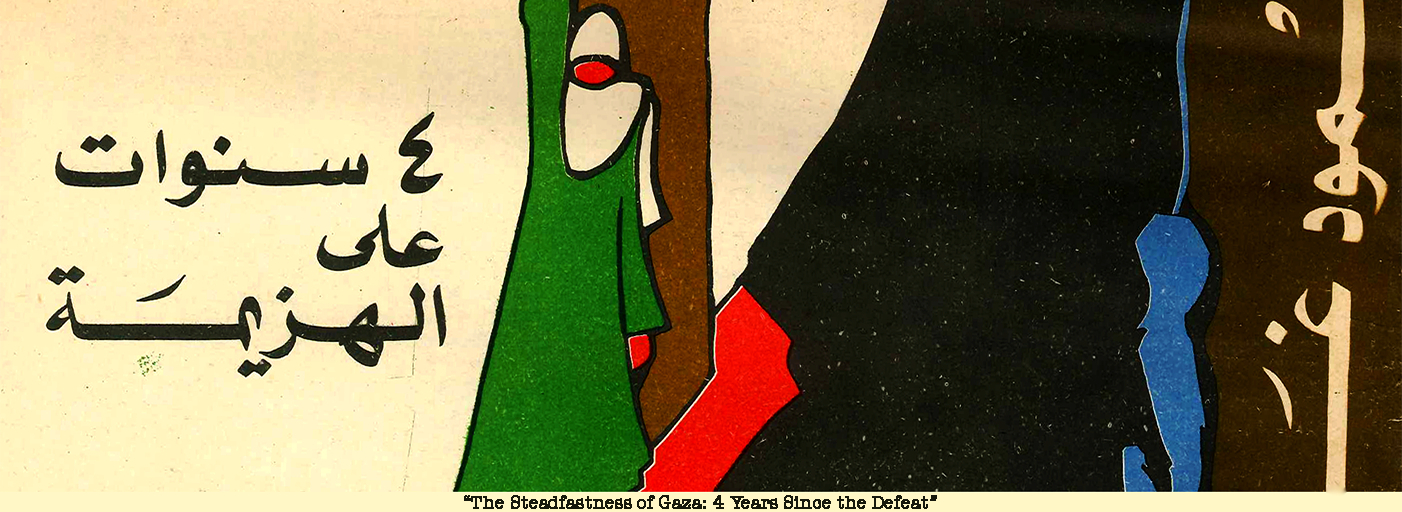In this online gallery can be found selections from the immense treasure chest of archives and voices of the Palestinian revolution. The materials are arranged within three themes: Revolutionary Movements, Revolutionary Moments, and Revolutionary Culture. These themes, and the sections within them, offer diverse aspects of Palestinian revolutionary life in the 1950s, 60s and 70s, primarily through the voices of ordinary and mid-level cadres of the Palestinian revolution.
Revolutionary Movements is in three parts, each offering insights into how Palestinian cadres founded revolutionary movements, parties, unions, and national institutions, exploring their seminal moments when they joined them, as well as some of the ways they participated in the multitude of structures, groups, and institutions of the Palestinian revolution. The last part focuses on the methods they used to plan and mobilise for collective action through these structures. It introduces some central experiences inside revolutionary movements and parties – although not all by any means -- especially that of the Palestine Liberation Organisation as the overarching national structure, as well as the popular unions and organisations, such as the General Union of Palestinian Women, the student, workers’ and teachers’ unions, all of which became core sites of revolutionary civic mobilisation across borders, the region, and throughout the world.
Next, Revolutionary Moments explores how movements and popular activities took place within historic Palestine as well as along its Jordanian, Lebanese, and Syrian borders; how Palestinian revolutionaries practiced global solidarity, and were supported by movements, states, and individuals across the world. The Moments section introduces aspects of widespread popular Arab involvement in the Palestinian struggle, and the types of regional and popular civic action on the Palestinian cause, notwithstanding some moments of profound political cleavages with some regimes. The deep African, Asian, and Latin American engagement with the Palestinian revolution is also featured here: at tricontinental capitals and regions, through collective diplomatic and political initiatives at the UN and the capitals of Western Europe, and through international meetings and conferences of unions, intellectuals, artists, as well as within the Non-Aligned movement.
This second section on Moments highlights a few of the landmark episodes in Palestinian revolutionary history, such as the launch of armed struggle in the mid-1960s, the battle of Karameh in Jordan, the liberation of the camps in Lebanon, Land Day inside Palestine, and the siege of Beirut. Rather than a comprehensive or complete study of any of these moments, the section on Moments aims to provide an appreciation of how ordinary cadres, in different geographic locations, dealt with some of the most critical junctures in their history.
The Revolutionary Culture section has examples from the world of Palestinian revolutionary ideas, intellectual output, and creative production from the printed press, cinema, radio, and photography. This was a huge area of production during the three decades of the Palestinian revolution covered here, and multiple sets of volumes could be produced on any of its features. It also explores the extremely important role revolutionary education played during this period, as well as a few of the forms it took. The purpose of these sections is to give a sense of the breadth of the front on which Palestinian cultural struggle was conducted, so as to explore the many different types of cultural experience generated by the revolution during that era.
Through the Learn sections, we hope users of the site can begin to hear the distinct voices of Palestinian cadres from different revolutionary movements, factions, and levels of political responsibility, see their faces, hear their debates and ideas, and touch their experiences, both individual and collective.






